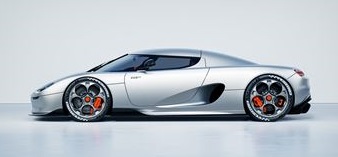Key specs
Koenigsegg CC850 (Targa) CC850 2024,2025,2026
What is the body type, Koenigsegg CC850 5.0 V8 (1185/1385 Hp) LST 2024?
Targa, 2 Doors, 2 Seats
How much power, Koenigsegg CC850 5.0 V8 (1185/1385 Hp) LST 2024?
1185 Hp @ 7800 rpm.
What is the engine size, Koenigsegg CC850 5.0 V8 (1185/1385 Hp) LST 2024?
5065 cm3
309.09 cu. in.
How many cylinders, Koenigsegg CC850 5.0 V8 (1185/1385 Hp) LST 2024?
8,
V-engine
What is the drivetrain, Koenigsegg CC850 5.0 V8 (1185/1385 Hp) LST 2024?
Rear wheel drive,
How long is this vehicle, Koenigsegg CC850 5.0 V8 (1185/1385 Hp) LST 2024?
4364 mm
171.81 in.
How wide is the vehicle, Koenigsegg CC850 5.0 V8 (1185/1385 Hp) LST 2024?
2024 mm
79.69 in.
What is the curb weight, Koenigsegg CC850 5.0 V8 (1185/1385 Hp) LST 2024?
1385 kg
3053.4 lbs.
Koenigsegg CC850 (Targa) CC850 2024,2025,2026 Specs
General information
| Brand |
Koenigsegg |
| Model |
CC850 (Targa) |
| Version |
CC850 |
| Engine version |
5.0 V8 (1185/1385 Hp) LST |
| Year production start |
2024 |
| Vehicle type |
Targa |
| Horsepower RPM |
1185 Hp @ 7800 rpm. |
| Curb weight kg -lbs total |
1385 kg
3053.4 lbs.
|
| Overall length mm - inch |
4364 mm
171.81 in.
|
| Doors |
2 |
Engine specs
| Cam configuration |
DOHC
|
| Engine position and orientation |
Middle, Longitudinal |
| Cylinders |
8 |
| Position of cylinders |
V-engine |
| Displacement (liters) |
5065 cm3
309.09 cu. in.
|
| Eng. horsepower RPM |
1185 Hp @ 7800 rpm.
|
| Weight / horsepower kg/hp - hp/tons |
1.2 kg/Hp
855.6 Hp/tonne
|
| Weight / torque kg/Nm - Nm/tons |
1 kg/Nm, 1000 Nm/tonne
1 kg/Nm
1000 Nm/tonne
|
| Torque Nm RPM lb-ft RPM |
1385 Nm @ 4800 rpm.
1021.52 lb.-ft. @ 4800 rpm.
|
| Bore (mm in) |
92 mm
3.62 in.
|
| Stroke (mm in) |
95.25 mm
3.75 in.
|
| Compression ratio |
8.71 |
| Fuel delivery system |
Sequential, multipoint fuel injection with individual cylinder presuure and back pressure sensors |
| Fuel type |
Petrol / Ethanol - E85 |
| Valvetrain |
4 |
| Engine aspiration |
Twin-Turbo |
| Powertrain architecture |
Internal Combustion engine |
Transmission and Drive system
| Drive configuration |
Rear wheel drive
|
| Transmission |
Koenigsegg 9 speed LST (Light Speed Transmission) |
| Transmission and Drive system-67 |
Koenigsegg Electronic Differential |
Brakes
| Front brakes |
Carbon-ceramic Ventilated discs, 410x38 mm |
| Rear brakes |
Carbon ceramic Ventilated discs, 395x32 mm |
| Anti-lock brake system |
ABS (Anti-lock braking system) |
| Brakes-79 |
Front 6 pistons Koenigsegg caliper |
| Brakes-80 |
Rear 4 pistons Koenigsegg caliper |
Steering
| Steering type |
Steering rack and pinion |
| Turns (lock-to-lock) |
2.5 |
| Turning diameter m - ft |
11.3 m
37.07 ft.
|
Suspension
| Front suspension |
Double wishbone |
| Rear suspension |
Double wishbone |
| Suspension-96 |
Hydraulically adjustable ride height |
| Suspension-97 |
rear Triplex dampers |
Body / Chassis
| Type |
Carbon fiber monocoque with aluminium honeycomb and integrated fuel tanks
|
| Body / Chassis-106 |
Monocoque torsional rigidity: 65?000 Nm/degree |
Wheels & Tyres
| Wheels size |
Front wheel tires: 265/35 R20
|
| Wheels rims |
Front: 9.5J x 20 Rear: 12.25J x 21 |
Exterior
| Exterior 123 |
Removable hardtop |
Safety and Security
| Safety and security-140 |
4 smart airbags
|
| Front |
Front/Rear hydraulic lifting system |
Dimensions
| Overall length mm - inch |
4364 mm
171.81 in.
|
| Overall width mm -inch |
2024 mm
79.69 in.
|
| Overall height mm -inch |
1127 mm
44.37 in.
|
| Wheelbase mm - inch |
2700 mm
106.3 in.
|
| Coefficient of drag |
0.34
|
Weights
| Curb weight kg -lbs total |
1385 kg
3053.4 lbs.
|
| Fuel tank liters | gallons |
72 l
19.02 US gal | 15.84 UK gal
|
Engine type
8 CYLINDER V-Engine
https://www.thecarspec.net/components/engine/8-cylinders-v

